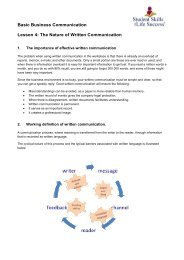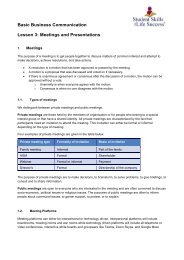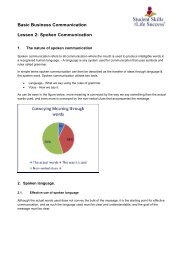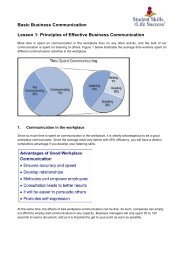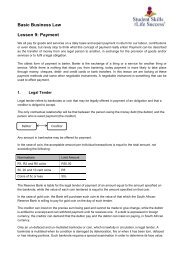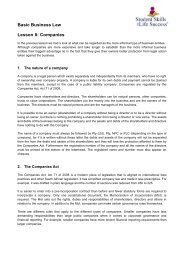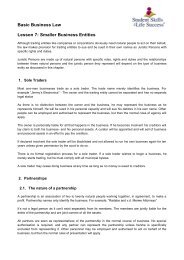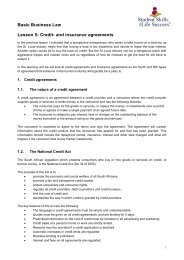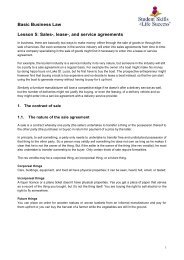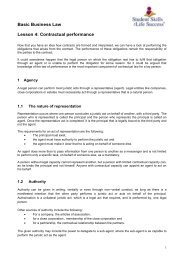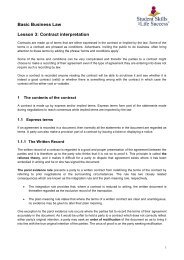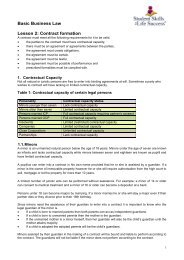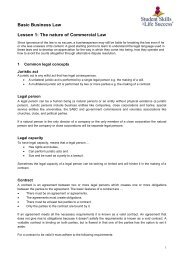Purchasing and Financing 2024
Purchasing- and Financial Management For 2nd year CATS learners. Aligned to the outcomes of the German accredited certification: “Industrie Kaufmann/frau”.
Purchasing- and Financial Management
For 2nd year CATS learners.
Aligned to the outcomes of the German accredited certification: “Industrie Kaufmann/frau”.
You also want an ePaper? Increase the reach of your titles
YUMPU automatically turns print PDFs into web optimized ePapers that Google loves.
Deciding which system to choose will differ from case to case but the following general<br />
principles can be used as a rough guide:<br />
o Where the inventory carrying costs <strong>and</strong> average are relatively low so that only very<br />
few replenishments would be necessary within a year, the cyclical system will be<br />
the best option.<br />
o When inventory consumption is subject to a seasonal dem<strong>and</strong> pattern, the fixed<br />
order quantity system will be the best option as you would be able to order more<br />
regularly during the season of high dem<strong>and</strong> <strong>and</strong> lower the risk that you might run<br />
out of stock.<br />
o In business with a large range of different products it might be more appropriate<br />
to use the fixed order quantity system as keeping track of all the stock levels <strong>and</strong><br />
calculating how much of each product to order could become to labour intensive.<br />
o When the rate of consumption tends to be rather constant, the cyclical system<br />
might dominate the choice, as the risk of running out of stock can be minimised.<br />
8. STOCK INDICATORS<br />
Students can carry out a variety of calculations for stock indicators.<br />
The following table indicates which stock indicator should be used for different<br />
measurements <strong>and</strong> how they could be calculated.<br />
Indicator Measure Formula<br />
Order Quantity How much to order at a<br />
Annual Use / Number of Orders<br />
time<br />
Average Stock General stock levels ( Order Quantity / 2 ) + Safety Stock<br />
Turnover<br />
Average Storage<br />
Time<br />
Average Storage<br />
Cost<br />
Average Capital<br />
Tied Up<br />
Storage Interest<br />
Rate<br />
How many times old stock<br />
is replenished in a year<br />
How long stock remains in<br />
the warehouse on average<br />
The cost involved in<br />
keeping the stock on h<strong>and</strong><br />
Value of the stock on h<strong>and</strong><br />
Interest lost on stock on<br />
h<strong>and</strong><br />
Annual Use / Average Stock<br />
365 / Turnover<br />
Average Stock x Storage Cost per Unit<br />
Average Stock x <strong>Purchasing</strong> Price<br />
(Average Storage Time x Interest Rate) / 365<br />
17




